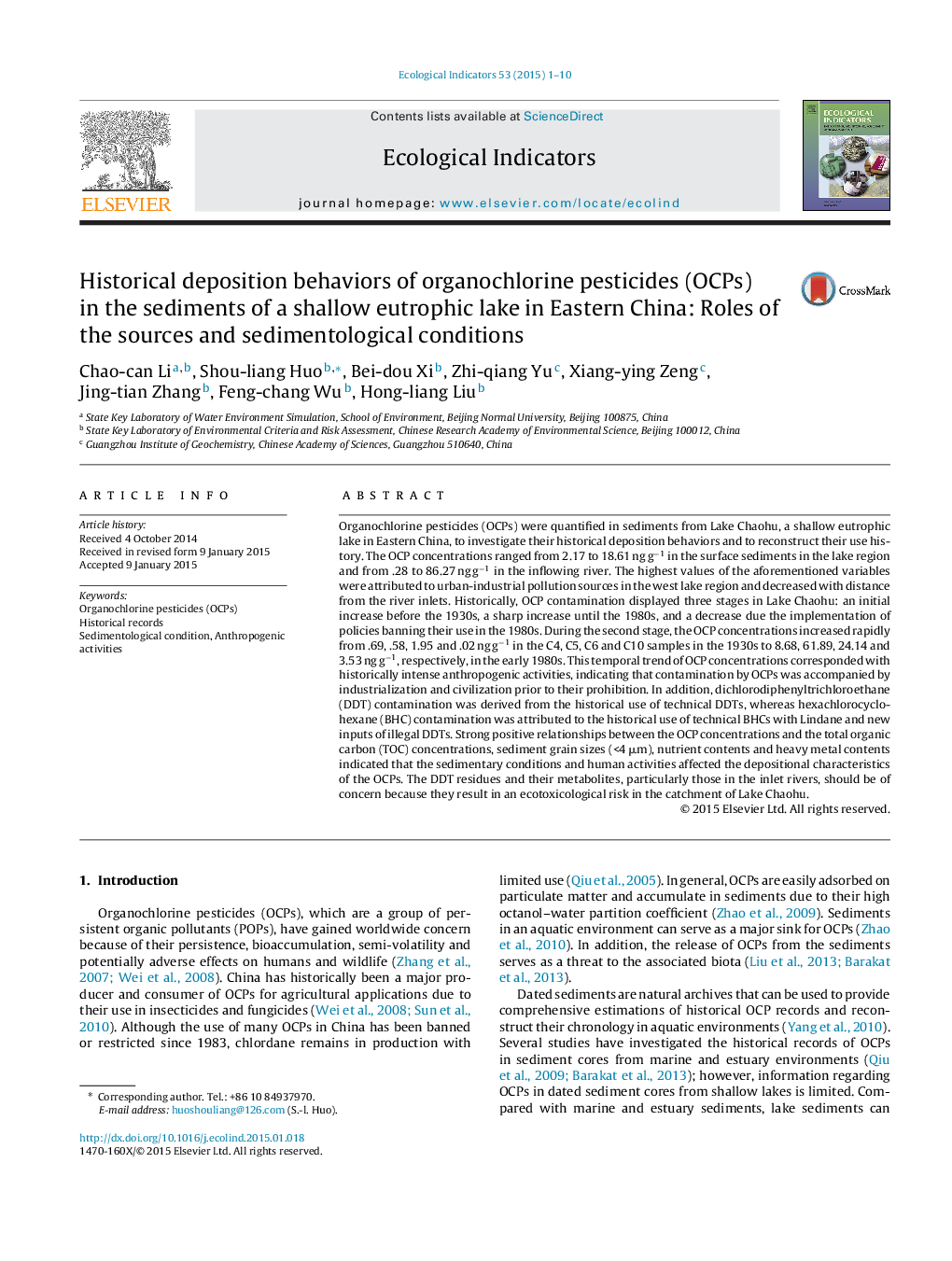| Article ID | Journal | Published Year | Pages | File Type |
|---|---|---|---|---|
| 6294404 | Ecological Indicators | 2015 | 10 Pages |
Organochlorine pesticides (OCPs) were quantified in sediments from Lake Chaohu, a shallow eutrophic lake in Eastern China, to investigate their historical deposition behaviors and to reconstruct their use history. The OCP concentrations ranged from 2.17 to 18.61 ng gâ1 in the surface sediments in the lake region and from .28 to 86.27 ng gâ1 in the inflowing river. The highest values of the aforementioned variables were attributed to urban-industrial pollution sources in the west lake region and decreased with distance from the river inlets. Historically, OCP contamination displayed three stages in Lake Chaohu: an initial increase before the 1930s, a sharp increase until the 1980s, and a decrease due the implementation of policies banning their use in the 1980s. During the second stage, the OCP concentrations increased rapidly from .69, .58, 1.95 and .02 ng gâ1 in the C4, C5, C6 and C10 samples in the 1930s to 8.68, 61.89, 24.14 and 3.53 ng gâ1, respectively, in the early 1980s. This temporal trend of OCP concentrations corresponded with historically intense anthropogenic activities, indicating that contamination by OCPs was accompanied by industrialization and civilization prior to their prohibition. In addition, dichlorodiphenyltrichloroethane (DDT) contamination was derived from the historical use of technical DDTs, whereas hexachlorocyclohexane (BHC) contamination was attributed to the historical use of technical BHCs with Lindane and new inputs of illegal DDTs. Strong positive relationships between the OCP concentrations and the total organic carbon (TOC) concentrations, sediment grain sizes (<4 μm), nutrient contents and heavy metal contents indicated that the sedimentary conditions and human activities affected the depositional characteristics of the OCPs. The DDT residues and their metabolites, particularly those in the inlet rivers, should be of concern because they result in an ecotoxicological risk in the catchment of Lake Chaohu.
